Nintendo Famicom / NES 101: A Beginner’s Guide
Note from racketboy: Special thanks goes to Radarscope1 (check out his blog, Word Games) for putting most of this guide together! The RetroGaming 101 series is aimed at gamers who are just starting out in the classic gaming scene or are curious about an older console that they don’t know much about yet.
The Nintendo Entertainment System is one of the most iconic video game consoles of all time and was the machine that got many 80s kids hooked on this interactive medium. There’s a lot of ground to cover when talking about this landmark console, but hopefully we cover the most important points here.
Historical Impact
- Nintendo’s first home console, launched in Japan as the Family Computer, or Famicom, in 1983 and as the Nintendo Entertainment System in the rest of the world statrting in 1985 . Before the Famicom/NES, Nintendo’s success in video games was mostly limited to a handful of hit arcade games, such as Donkey Kong and Mario Bros., and the Game & Watch handheld LCD games.
- Many of Nintendo’s biggest franchises began life on the NES, including the Legend of Zelda, Metroid, and Kid Icarus, as well as Mother (aka Earthbound in the West) and Nintendo Wars (aka Advance Wars).
- Many long-running third-party franchises also started on the NES, including Final Fantasy, Dragon Quest, Castlevania, Mega Man, and Contra.
- The popularity of the NES is often credited with reviving the North American video game market after the “crash” of the early 1980s.
- The NES dominated the video game market in North America and Japan from the mid-1980s to the early 90s, stomping ut nearly all competitors during the 8-bit era. Nintendo leveraged that market share by pressuring third party game companies into contracts that limited how many games they could release in a year and required that Nintendo manufacture the cartridges for a fee.
- The NES was the first home console to use a cross-shaped d-pad on its controller, a design that has since been imitated and used on nearly every console and portable gaming device since. Before the NES controller was released, home console control inputs were a wide variety of hit-and-miss designs. After the NES, most console controllers more or less followed and iterrated on the d-pad design. The d-pad was taken directly from Nintendo’s portable Game and Watch LCD games, which had a design that also eventually inspired the Nintendo DS.
- The NES saw the first passwords and battery back-ups that allowed for game saves.
- The NES introduced many gamers who didn’t have access to PCs to role-playing games. Nintendo’s huge give-away of Dragon Quest (called Dragon Warrior in the west) via Nintendo Power was especially key in getting players to try an RPG. Final Fantasy, the Ultima games, the Legend of Zelda and Crystalis also played a role in expanding the genre.
Strengths
- Large Game Library: The system has a huge and varied library, with a very good ratio of quality games. The NES/Famicom saw new releases for 11 years, from 1983 to 1994. There were more than 750 games released in the North American market.
- Lots of Timeless Classics: Nintendo is one of the medium’s all-time top developers, and the first-party games produced for the NES stand the test of time and are worth playing today. Games such as Super Mario Bros., SMB 2, SMB 3, Punch-Out, the Legend of Zelda, Metroid, Dr. Mario, Kirby’s Adventure, and Kid Icarus hold up not just because of nostalgia, but because they are solid games.
- Inexpensive Game Cartridges: Most of the best games are available for low prices today. The console’s huge install base and popularity means nearly every highly-regarded game sold in high enough numbers to warrant fairly large print runs. For the collector, there’s perhaps no better place to start. Game cartridges and hardware are easy to find at relatively cheap prices. Yard sales, thrift stores, resale game stores, eBay and nearly every gaming forum out there will offer you a chance to score NES games, controllers and consoles.
- Nifty Selection of of Accessories: There are also plenty of peripherals for collectors to focus on, though many of them are somewhat silly and superfluous. There’s no denying the nostalgic cache of R.O.B. the Robot or a Zapper, though.
- Strong Selection of Platfomers: If you’re a fan of platformers, the NES is your system. The huge library of platformers includes several series with multiple releases on the console such as Adventure Island, Mega Man, Castlevania, Wizards & Warriors and, of course, Mario. Stand alone gems include Metal Storm, Kirby’s Adventure, Little Nemo: The Dream Master, Legacy of the Wizard, Kid Icarus, Gargoyle’s Quest II, Faxanadu, Bionic Commando and Batman.
- Strong Youth & Casual Appeal: This is a great console for kids and casual gamers. The Super Mario games, Tetris, Dr. Mario, Tecmo Bowl, Duck Hunt, Super Off-Road and lisenced games like Duck Tales make the NES a hit at parties.
- Iconic & Nostalgic. It seems that no matter what territory you live in or how old you are, if you have an NES in your home you can bet people will notice it when they come over. They’ll want to fire it up and have a go whether or not they’re a hard core gamer or haven’t touched a controller in years.
Weaknesses
- Control Deck Hardware Reliability: The original Control Deck — the front-loading “toaster” hardware that accounts for the vast majority of NES’s — can be finicky and hard to operate due to flaws in the design. To appeal to a North American market that had soured on the video game “fad” in the early 1980s, Nintendo redesigned the top-loading Famicom to look and feel more like a VCR than a traditional game console. The design used an odd connection method that didn’t truly lock the cartridges into a receiving end, and even caused the connectors to bend over time. Corroded connectors are also a problem. Luckily, this can be fixed fairly easily and cheaply by replacing the 72-pin connector inside the unit and simply cleaning the cartridges.
- Inflated Collectors Prices on Complete Games: Nostalgia can have its price. Because the NES is so highly collectible, complete-in-box copies of games are usually ridiculously over-priced on auction sites like eBay. Games that carry recognizable names today such Final Fantasy, Super Mario Bros. 3 or Metroid can sell for $20 or $30 or more for complete copies. These games are often advertised as “rare” but are far from it. Most of the truly rare NES games are quirky titles like Princess Tomato in the Salad Kingdom or Bubble Bath Babes, and are the type of games only hard-core collectors would seek. Collectors who are interested in simply owning and playing the best and most well-known NES titles shouldn’t be deceived by sales of supposedly “rare” games.
- Inferior Arcade Ports: While plenty of early 80s arcade ports on the NES are good, some arcade conversions from later in the NES lifecycle are pretty inferior ports. The NES lived a long life, and by the late 1980s and early ’90s many arcade games were being programmed on 16-bit architecture with more memory. Though still a leading machine in the home market, the NES couldn’t keep up with some titles like Strider, Smash TV, Double Dragon II, or Bad Dudes. However this also means that some games such as Contra, Gradius and Bionic Commando were altered to better fit the hardware, with the results surpassing the cabinet-bound originals in many gamers’ eyes.
- Cardboard Boxes for Games: Game packaging for the NES was also not meant to last, so finding boxes in mint condition can be difficult.
Game Library
- Games That Defined The History of the NES – If you want to survey the games that made the Nintendo Entertainment System the dominant force of the 8-bit generation, take a look at this guide.
- The Cheapest NES Games Worth Your Time – If you want to build up a quality NES library with the least amount of cash, check out this guide.
- The Best Undiscovered NES Games – There are plenty of good NES games that most people haven’t tried yet. Check these games out to broaden your horizons.
- The Rarest & Most Valuable NES Games – The NES has some of the most collectible games of all time — including the Holy Grail of game collecting, the Nintendo World Championship Gold Cart.
- The Games That Pushed the Limits of the NES – If you want to show off the NES’s technical capabilities, look at these games first. It’s quite impressive to see what some creative programming can do.
Technical Details
- The CPU in the Famicom and North American NES is an 8-bit processor made by Ricoh, the RP2A03, which runs at a 1.79 MHz. The PAL version of the NES used a variant CPU that is identical except it runs at slower 1.66 MHz. This CPU was based on the MOS Technology 6502, a widely used processor introduced in the mid 1970s that powered a string of influential computing and gaming devices like the Apple I, Apple II, BBC Micro, the Commodore VIC-20 and the Atari 400 and 800. A custom PPU was also made by Ricoh. The NES can display 48 colors and 5 shades of gray. It has a resolution of 256 horizontal pixels by 240 vertical pixels.
- The NES uses five-channel sound with one waveform assigned to each. There are two “square” waves, a “triangle” wave, and two other channels available for sound effects, often just static bursts. All sound is mono, which while limited could be put to very good use by quality composers. The Japanese Famicom had expansion slots allowing some cartridges to use extra sound chips(originally a function of the Famicom Disk System, which connected via the cart slot). This wasn’t included in the NES, meaning a handful of games came to the West with inferior sound compared to their Eastern counterparts.
- The NES Control Deck released in North America and PAL territories was capable of outputting both RF and composite video. The original Japanese Famicom was RF-only. The second-generation “A/V Famicom,” released in 1993, had composite-only audio and video output. Curiously, the North American version of this remodeled NES (the top-loading NES 2) was only capable of RF video.
Hardware Variations
 |
Family Computer (Famicom) Nintendo’s 1983 original entry into the console market in its home territory, nicknamed the Famicom. Bright colors and top-loading design were typical console designs of the early 80s. Early versions had hard-wired controllers with a built-in microphone on the second controller. Later versions had detachable controllers. Shop for Famicom on eBay |
 |
NES Control Deck The 1985 gray box known to U.S. and European gamers. Designed to look and feel more like a VCR than a typical game console. Despite its design flaws, many enthusiasts prefer it over the NES 2. Shop for NES Control Deck on eBay Shop for NES Control Deck on Amazon.com |
 |
Famicom Disk System Japan-only peripheral released in 1986. Using double-sided re-writable disks as media, the FDS allowed for larger games and saved data. It made games like Metroid and the Legend of Zelda possible. It featured limited FM synthesis sound capabilities, but the band used to power the disk drive was known to break. Though the device never came west, American and European gamers still got to play most of the games introduced in the FDS as they were released as cartridges with battery back-ups. It runs on C batteries or external AC power. Shop for Famicom Disk System on eBay |
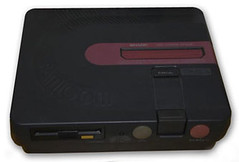 |
Sharp Twin Famicom Made by Sharp and officially licensed by Nintendo, this 1986 Japan-only model combined the Famicom and the FDS into a single machine. The two devices were essentially placed side-by-side in a combined casing. A switch toggles between the two devices and prevents using both at the same time. The machine features composite video out. It came in two colors, red with black detail and black with red detail. A second iteration of the Twin Famicom had a slightly different casing that was black with gray detail, and featured controllers with built-in turbo and longer cords. Shop for Sharp Twin Famicom on eBay |
 |
AV Famicom Released in 1993 in Japan, this updated version of the Famicom was sleeker and had composite video output (with no option for RF output). The LED power light was also removed. Shop for AV Famicom on eBay |
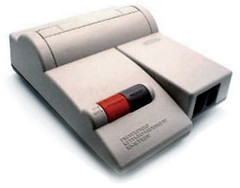 |
NES 2 The Western version of the A/V Famicom was a big improvement in one area — reliability — because it scraped the “toaster” design of the NES cartridge connection in favor of the more proven top-loading design. But this version also removed the composite video output option, which had become much more widely adopted by the 1990s, and only allowed for RF video output. Like the A/V Famicom, there is no LED power light. Most accessories and peripherals work with the NES 2. Shop for NES 2 on eBay Shop for NES 2 on Amazon.com |
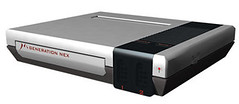 |
The Clones A few years ago, a number of NES hardware clones started popping up online. They offered a cheap an easy way to get a real machine to play old NES cartridges and have decent AV output, but unfortunately, game compatibility hasn’t been the greatest. Back in 2007, we did a round-up of NES clones and compared them to the Nintendo originals in terms of both price and quality. It’s also worth mentioning that some of these NES clones also play SNES or Genesis carts as well. Shop for NES Clones on eBay Shop for NES Clones on Amazon.com |
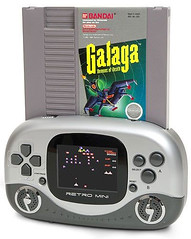 |
Portable Clones After creating a cheap chipset to emulate the NES hardware for various clones, the next logical step would be to make it smaller for a portable setup. Granted, having huge NES cartridges sticking out of the back of a portable device isn’t the most practical thing in the world, but these items do appeal to certain retro gaming enthusiasts. Shop for Portable NES Clones on eBay Shop for Portable NES Clones on Amazon.com |
What To Look For When Buying
There’s the older, iconic Control Deck and the newer NES 2. For most, the Control Deck is the way to go. The NES 2 is highly sought after because of higher reliability and collectability factors, but can be expensive, especially if you’re buying online. The extra cost and inferior connections of the NES 2 are big negatives. On a purely aesthetic note, the NES “game paks” weren’t designed for the shorter form factor of a top-loading console, and so the carts look a bit odd sticking up out of the top of the machine (which is also the reason for the rounded cover on the slot, which you don’t see on the A/V Famicom). The older models can be finicky, but if you replace the 72 pin connector they will likely work perfectly. You can do this repair yourself, and most retro gaming shops worth their salt will be able to do it for you for a few bucks. The new connectors usually cost $8 to $10 bucks, much less than the cost of an NES 2 on eBay. The Control Decks can be cleaned fairly easily as well, which will improve reliability.
The best advice for buying an NES is to be sure you can test it yourself before purchasing if you’re paying any real amount of money for it. Make sure you don’t get a bunch of black screens and blinking power lights when trying to turn it on. If that’s the case the connection is likely shot. Also try to test the tray that holds the games and make sure it has a good amount of spring to it and isn’t worn out, as this can lead to poor connections. A good trick for getting a finicky game to play is to pop it up, and gently wiggle it back toward you slightly, enough so that it just barely clears the plastic edge below when you push it down. Blowing in the cart will only do so much good – you’re better off cleaning with some 90% rubbing alcohol and a q-tip. If you need to blow dust out do it at an angle so you’re not just blowing the dust — and your saliva — down into the cart.
Accessories
The NES had dozens of accessories, some truly useful and others truly odd. Here are some of the highlights, starting with the peripherals that are most worth your time and money.
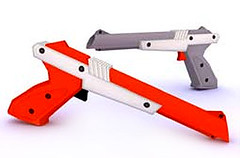 |
The Zapper It’s a light gun, for your NES. Released in 1984 in Japan (as the Beam Gun) and at launch in the West. Earlier versions of the Zapper were two shades of gray, like the NES Control Deck, but was eventually changed to light gray and traffic-cone orange. Works with 18 games, including favorites like Duck Hunt, Wild Gunman and Hogan’s Alley. But don’t miss oddities like Gumshoe or Chiller. Shop for NES Zapper on eBay Shop for NES Zapper on Amazon.com |
 |
Four Score First-party adapter allowing four players to play more than 30 supported games, including Super Off Road, Bomberman II, and Super Spike V-Ball. Also can be used for turbo or as an extension cord. Released late in hardware cycle, in 1990. Shop for Four Score on eBay Shop for Four Score on Amazon.com |
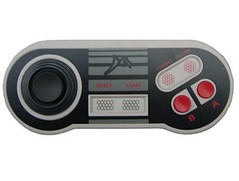 |
Generation NEX Wireless Controllers While most of the other items in this guide were actually released in the 8-bit era, Messiah released these wireless controllers to market with their Generation NEX clone console. The design of the controller is a bit more inspired by the NES Max (see below) than the standard NES controllers. Shop for Generation NEX Wireless Controllers on eBay Shop for Generation NEX Wireless Controllers on Amazon.com |
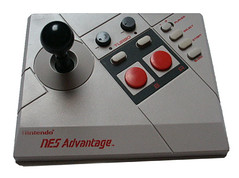 |
NES Advantage Nintendo’s own arcade-style joystick for the NES, released in 1987. Well-built and supported by any game that supports a standard controller, the Advantage is mostly worth picking up, especially considering the arcade-style gameplay of many NES titles. But be warned that the stick does not “click” like modern arcade sticks, so it doesn’t have the most precise feel. Your mileage may vary, but the Advantage is not expensive or hard to find so it’s worth checking out. Can be used by two players thanks to dual plugs and a switch to toggle between players. Also features turbo. It’s also worth mentioning the Messiah also made a larger and wireless version of the NES Advantage that works with their Generation NEX clone or any other NES system if you have the RF recievers. |
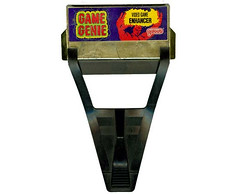 |
Game Genie Hack nearly every game in the NES library by finding codes for free online. The Game Genie is an unlicensed NES accessory made by Codemasters and Galoob, and even prompted a lawsuit by Nintendo (which Nintendo lost). It was designed to work with the toaster-style Control Deck and requires a now hard-to-find adaptor to work well with the NES 2. If you’re into these kinds of hacks on retro machines, the Game Genie is worth a look. Shop for Game Genie on eBay Shop for Game Genie on Amazon.com |
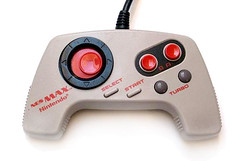 |
NES Max First-party gamepad featuring a sliding thumb pad in place of a d-pad. At first glace this appears to offer smoother, analog input, but in reality there’s nothing more than an 8-way digital pad underneath. It is the only Nintendo-made gamepad with dedicated turbo buttons. Some people like this pad quite a bit, but it’s a matter of preference. Shop for NES Max on eBay Shop for NES Max on Amazon.com |
 |
Power Pad Floor-mat style controller with 12 “buttons” made by Bandai and released in 1986. Used for five supported games(10 in Japan) such as World Class Track Meet. Most players cheated by slapping the pad with their hands rather than doing any real running. A lot of gamers remember this accessory because it eventualy came packed in with the NES. The Power Pad likely won’t be worth it for most players today, but it is a noteworthy pre-cursor to games like Dance Dance Revolution. Shop for Power Pad on eBay Shop for Power Pad on Amazon.com |
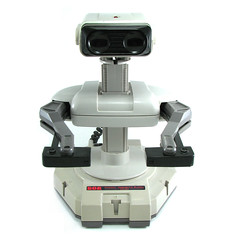 |
R.O.B. The Robitic Operating Buddy is an iconic NES accessory, but its usefulness is limited to just two games and not very good ones at that: Gyromite and Stack-Up. R.O.B. was part of Nintendo’s attempt to make the NES look like something more than a mere toy (it’s a robot – it has to be advanced, right?), but the device was awkward to use and frankly not nearly as fun as it looked on the front the NES box in 1985. Fun for collectors, but not necessary for those looking to simply explore the NES library. Shop for R.O.B. on eBay Shop for R.O.B. on Amazon.com |
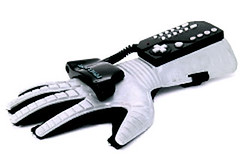 |
Power Glove Another attempt to take the NES to the next level, and another failed device that wasn’t supported with software. The Power Glove was released in 1989 and supported only two games, Super Spike V-Ball and Bad Street Brawler. The glove is functional but limited. It uses a series of ultra-sonic speakers, microphones, and conductive ink. Interesting as a piece of consumer electronics and pop culture history(“It’s so bad!”), but not worth much to the average player of NES titles. Shop for Power Glove on eBay Shop for Power Glove on Amazon.com |
 |
U-Force Another ill-fated motion controller. Shaped something like a laptop with two infrared panels, it purported to allow hands-free control of any NES game. Seeing as how Project Natal is considered cutting edge tech 20 years later, you can probably guess how well this one worked. For collectors only. Shop for U-Force on eBay |
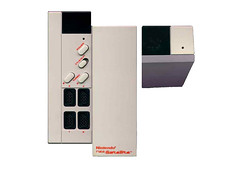 |
NES Satellite Like the Four Score, except wireless. Except you have to plug your regular controllers into a port that sends infra-red signals to a receiver plugged into the NES Control Deck. Made by Nintendo and actually predates the Four Score by a year(1989). Perfect for gamers who sit more than 50 feet from their televisions. Shop for NES Satellite on eBay |
Emulation
Even without owning the machine, it’s still possible to play the greats using Nintendo’s Virtual Console. But that’s just the beginning. Due to its popularity, there are a variety of ways to emulate NES games, for computers, consoles, and handhelds. Just take your pick:
- Nester is an open-source NES emulator for Windows, which has recently had its source code uploaded on Sourceforge.net so public work can continue. It was originally designed in 1999 by Darren Ranalli, and released for public use in 2000. Large sections of the emulator were also written by Matthew Comte, and the project was intentionally designed for stability and ease of transfer to other formats. It was coded in C++. NesterJ is an unofficial version with expanded featuers.
- NESticle was a DOS-based emulator designed by Icer Addis, cofounder of Bloodlust Software. Built using C++ and released in 1997 for DOS and Windows 95, it was a freeware product that caught on rapidly and was one of the first really popular NES emulators. Unfortunately for everyone, Addis’ servers were hacked and the source code was stolen in 1998. Addis decided to stop work on the program, and discontinued work on the emulator. NESticle was also well known for using a bloody, disembodied hand for a pointer, and an image of testicles for its Windows icon.
- FCE Ultra is an incredibly widespread emulator for the NES, and functions in DOS, Windows, Mac OS X, and Linux X, while also being ported to the PSP, GP2X, and home consoles like the Nintendo Gamecube. Officially updates were stopped in 2004, but several modified versions have since appeared. In 2006 these were combined to form FCEUX, which is still being updated. The emulator offers save states, the ability to take screen shots, TCP/IP connectivity, and even a Game Genie Encoder.
- Nestopia is another open source emulator. While originally put out for Windows, it has since found its way to Mac and Linux operating systems. It includes save states, the ability to “rewind,†controller emulation(including the Power Pad), built in Game Genie, netplay, the ability to record gameplay, and even accurate emulation of videos. It is still active.
- Other emulators include It Might Be NES for the PlayStation, nesDS for Nintendo DS, iNES for iPod, Newtendo for the Apple Newton, NesterDC for the Dreamcast, and many more.
Racketboy Featured NES Emulation Guides
Affordability
- The NES consoles themselves can be a bit high in price considering how many sold originally. They can sell for between $40 and $70 depending on the condition (like with a new 72-pin connector) and the items included.
- NES games can range from dirt cheap to extremely expensive, depending on the rarity and quality of the game. However, if you are going for pure value, you can find even the rarest games for a reasonable price if you only care about the cartridge.
Affiliate programs and affiliations include, but are not limited to, the eBay Partner Network or Amazon Associates.

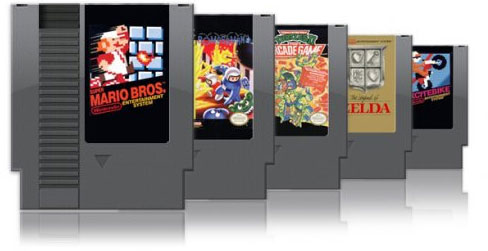
Man, I really want a NES, like all non Sega retro consoles they sell for quite a bit in New Zealand.
A lot of people say that Windex is the way to go when cleaning carts. I would think that would make sense due to the 50/50 solution.
Changing the 72 pin connector didn’t make my system 100% reliable. It plays some games with no problem, others will crap out a few minutes into playing, and some just refuse to work. It’s not hard to get to the connector, but I was afraid to break the motherboard because the connector was on so tight. Maybe I didn’t install mine correctly, but it’s not a guaranteed fix. I tried buying one of those Yobo fake consoles…what a waste of money. It works most of the time but my original NES controllers wouldn’t work except for the start button. The NES will always be the best system in my mind regardless of it’s annoyances.
LJP (Little John Palm) http://www.little-john.net/ for palm os is a great free emulator that among other system emulates NES perfectly. The only game that does not work on it (that I have tried) is Thunder & Lightening. I used LJP on my Tungsten E2, TX and Centro.
The PowerPak might be a good mention for Beginners not wanting to spend lots on games.
Sad to say I still have a NES Max, even though I don’t own a NES. I’m really not a fan of it…
Still got the Zapper and the NES Advantage. Always wanted a R.O.B.
Back in the 80’s my family and i were the only ones in our school that did’nt own this console.Though the graphics and gameplay of the NES may have been superior to the Atari 2600,Commodore 64/Vic 20 games we played back then-it was the exorborant cartridge cost that scared us away.Besides,it’s successor-The Super NES or SNES is/was a better console to get/have.
ive got about 100 nes games in my collection now plus accessories (zapper..some 3rd party arcade sticks…game genie and 2 useless satellites) had a ROB but it got taken away with some rubbish to the 2nd hand store 🙁 didnt have any games to go with it so it was just fun for turning on the spinning disks
My top loader NES deck still runs great. I have a NES library of about 240 titles and really the key thing is to just keep the carts & the system clean. They used to sell the cleaning kits for awhile at Gamestop retail stores and bought one for each cart based system i have (NES, SNES, & Genesis). I just use that & Q-Tips since the brushes that came with them are all used up. Of course you can’t use the alcohol solution on the systems but these cleaning kits came with this cartridge shaped cleaner that connects into the connector of the system and you pull this in & out several times and that keeps the connection clean. If the spring becomes loose or the pins are worn then obviously that’s another issue altogether. They have a chain of retail stores called Play n Trade in the US that caters to the retro gaming community since Gamestop has ceased on a carrying anything made before 2001 basically, and they can repair your old systems with these issues. Which is awesome! You can also buy anything from Pong to next generation consoles, it’s just amazing some of the things they have to purchase there and it beats having to shell out shipping & handling charges (even prices themselves) online if they have something retro you’re looking for.
i have a console that has 76000 NES games in the board. got it for my 15th birthday. the best game for NES is Super Mario Bros. it also included a cartridge which has 120000 games on it.
Really awesome guide and very crucial information for new collectors. I’m currently trying to just get the CIB NES games as I don’t find any fun just having them with no box. I do however collect the rare ones even though they are not boxed because you might find the box somewhere else, you never know! Great stuff!
Since when is Kid Icarus a “franchise”? Franchise implies it was a system seller and several or atleast more than 1 installment. K.I. only has one sequel which was for Gameboy in 1991 and it was hardly a system seller.
I wanted to know what it meant by ‘RF video output’ being a bad thing in the NES 2, I don’t know much about technology I’m getting it for my boyfriend and I’m not sure what NES to buy
RF is the hookup that you plug into the antenna port instead of the red/yellow/white plugs.
It’s the worst video quality of the bunch — but is fine if you’re just playing on a small, old TV.
But if you’re bumping up to a more modern TV, you will probably want Composite or S-Video.
Best ever. Long live the NES. Amen.
Great tips! I will be looking around for a good deal.
What about the M82?
I still have my original NES, NES Advantage, original controllers, NES Max, Zapper and they all still work like a charm. I did replace the pins inside the system though but it does work lots better then before. I have always thought the NES and SNES was the best era of home gaming.
The Power Glove also was for Super Glove Ball, which was an awesome game. And another thing to note, the Game Genie is amazing at getting game that don’t normally work to magically work good as new.
A large percentage of of the things you assert happens to be supprisingly accurate and that makes me ponder the reason why I hadn’t looked at this with this light previously. This particular piece truly did switch the light on for me as far as this subject goes. However at this time there is just one point I am not really too comfortable with so while I make an effort to reconcile that with the actual central theme of your issue, let me observe exactly what the rest of your readers have to point out.Very well done.